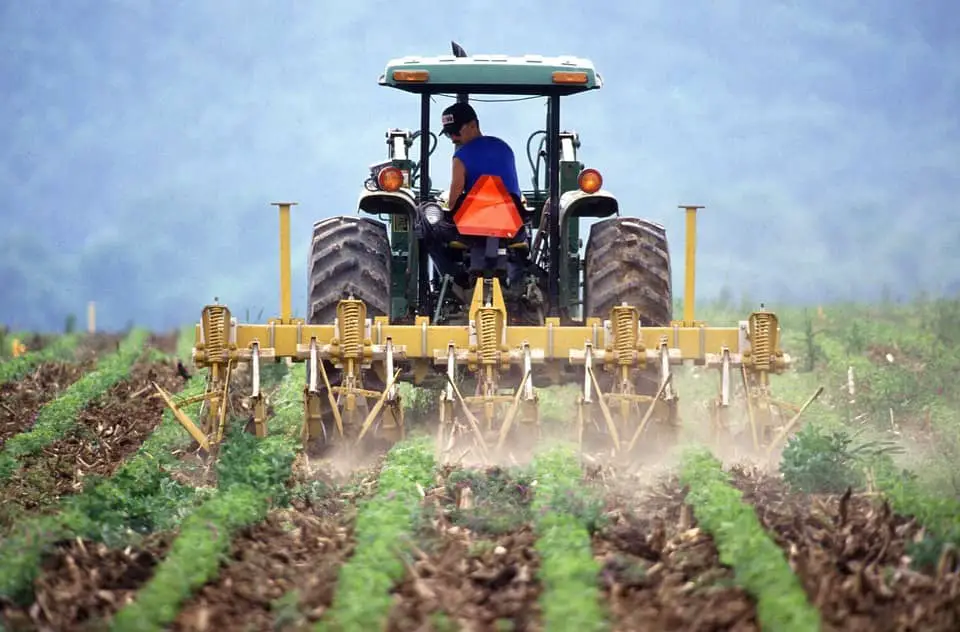Contour farming benefits, advantages, history, origin and need are explained here. How contour lines farming helps to reduce soil erosion is given here.
What is contour farming and its advantages?
Contour farming is sustainable agriculture in active form. Slope land tilling is done in this technical farming. The practice of tilling slope land along elevation lines is done it is beneficial to conserve rainwater and reduce soil erosion. Furrows, crop rows and wheel track across the slope acts as reservoirs and catch the retained rainwater. Reducing soil erosion is one of the biggest contour farming benefits and it has more benefits which you will get to know while reading this post.
Contour cultivation is not a new farming model instead it is a traditional farming model which has been practised for centuries. This traditional cultivation is mostly practised in the region where irrigation is important. Contour farming in the United States was first practised in the 19th century.
In the 1930s US Soil Conservation Service has done essential efforts to promote contouring as an essential part of soil erosion control. Due to the effort of US soil conservation services, contouring became popular and it was adopted worldwide by farmers.
Another advantage of contour farming has been proven to reduce fertilizer loss. The contour farming method is useful for preventing the loss of water, power and time consumption. Its techniques are important to increase crop yield and reduce erosion. So these are some important contour farming advantages therefore one must use this technique.
In case you missed it – Phosphorus use in agriculture problems and solutions
It is very helpful to absorb the impacts of heavy rains. In straight-line planting rain often wash away the topsoil. Farming becomes more effective when used along with such practices including terracing, strip cropping and water diversion.
Top 5 Contour farming benefits
- Reduces fertilizer loss.
- Reduce power and time consumption.
- Reduce loss of important nutrients in the soil.
- Increases crop yield.
- Most importantly contour lines in agriculture reduce soil erosion.
Contour plowing benefits
It is also known as contour ploughing and contour bunding. It is a farming practice in which planting or ploughing is done across the slope following its elevation contour lines. Water break is created by contour lines which reduces the formation of gullies and rills during heavy rainfall. This allows more time for rainwater to settle into the soil.

In contour plowing the ruts made by the plough are not parallel instead they are erect to the slope. Furrows curve around the land and are level, this method is helpful for preventing tillage erosion. Contour bunding is a process where stones are placed around the contours of slopes. The importance of ploughing is huge because ploughing is helpful to reduce soil erosion and saves water.
History of contour farming
Contour farming was first developed by the Phoenicians. Phoenicians are responsible to spread this farming modal throughout the Mediterranean. However, the Romans preferred straightforward cultivation which became standard. In 1930 contour farming was promoted by the US soil conservation service which is currently Natural Resources Conservation Service. In 1935 dust bowl was a big problem in America. Soil erosion was a huge problem along with desertification in 1935 during the dust bowl period.
Soil conservation service state governments and agriculture universities worked together, they organized some agriculture programs such as the University of Nebraska to promote the contour method to farmers. All of them did good hard work and the effort was praiseworthy by 1938 the adoption of new agricultural techniques such as contour farming reduced soil erosion by 65%. Do you know what is dryland farming?
Cover crop in agriculture
Cover crops are fast-growing crops and these crops are planted to reduce soil erosion and increase nutrients in the soil. Cover crops are beneficial to plants because they provide organic matter to the soil. Some examples of cover crops are rye, cowpea, vetch and buckwheat etc.
Cover crop growing season
Cover crops are mainly grown between the rows and when cash crops are not grown.
FAQ
What is soil erosion?
After heavy rainfall, lots of soil is washed away with the rain resulting in soil erosion. Soil erosion led to the wastage of nutrients and other components of soil which are good for the growth of plants. Therefore it is necessary to prevent soil erosion and the contour technique is one of the best techniques to prevent soil erosion.
How to prevent soil erosion?
According to agriculture experts contour farming technique is helpful to prevent soil erosion.
What is contour bunding in agriculture?
Contour bunding is a farming practice beneficial for reducing soil erosion. In this method, stones are placed around the stopes of the contour.
What is the benefit of contour ploughing in agriculture?
Contour ploughing is helpful to reduce soil erosion, water loss, fertilizer loss and nutrient loss.
What is the dust bowl in America?
Dust bowl in the USA was actually a time period of severe dust storms that use to damage the agriculture and ecology of America and Canadian prairies.
What are the major benefits of contour farming?
It reduces fertilizer loss, reduces power and time consumption, reduces soil nutrients loss, increases crop yield and effectively reduces soil erosion.
How does contour farming prevent soil erosion?
Following its elevation contour lines ploughing is done across the slope. Contour lines create water breaks which reduce the gully formation and rills during heavy rainfall. This allows sufficient time for rainwater to settle into the soil.
Read More
Multilayer Farming Project Report
Phosphorus importance in agriculture